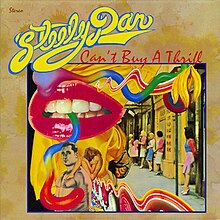Midrash – Fact, Fiction or Projection?

Midrash are rabbinical fables
which are legends based around stories, events or people in the TNK. However, these are often very tall stories,
which are designed to give a new slant or justify rabbinical lore and law,
rather than reflecting historical or factual truth. For the fundamentalist
Rabbanites, however, these are all part and parcel of the oral law and are all
true in some sense or other. The problem is that there is no supporting
evidence for most midrashim, and they
often go against logic and even Torah.
A particular example is the
midrashic story of Rahab, who was saved
by the 2 spies sent by Joshua to Jericho.
The rabbis make an outrageous
claim, that the prostitute Rahab became Jewish and married Joshua.
“After having engaged in prostitution for forty years, Rahab
converted at the age of fifty. She said: “Master of the Universe! I have sinned
with three things [with my eye, my thigh, and my stomach]. By the merit of
three things pardon me: the rope, the window, and the wall [pardon me for
engaging in harlotry because I endangered myself when I lowered the rope for
the spies from the window in the wall]” (Mekhilta de-Rabbi Ishmael, Masekhta
de-Amalek, Yitro 1). Another tradition has her saying: “Pardon me by merit
of the rope, the window, and the flaxen [the stalks of flax under which she
concealed the spies]” (BT Zevahim loc. cit.).
Many Rabbis
viewed conversion favorably, an attitude that is reflected in exegeses about
Rahab. The midrash
attests that Rahab married Joshua following her conversion (BT Megillah 14b).
Eight kohanim
who were also prophets were descended from her: Jeremiah, Hilkiah, Seraiah,
Mahseiah, Baruch, Neriah, Hanamel and Shalom. According to one opinion, the
prophet Huldah was also among her
offspring (Sifrei on Numbers, chap. 78). Other traditions also include
Ezekiel son of Buzi (Sifrei Zuta loc. cit.). In another exegesis, God
showed Moses before his death, through the spirit of divine inspiration, the
line of prophets that would issue from Rahab (Sifrei on Deuteronomy,
Chap.338).”
- source: http://jwa.org/encyclopedia/article/rahab-midrash-and-aggadah
The midrashim are making a number
of claims – that Rahab married Joshua; that her descendants included many
prophets, and also Kohanim. There is not any evidence or suggestion in the TNK
that supports these wild claims. There are, however, some subtle hints that
suggest their falsity.
In Joshua 6, we see:
22 And Joshua said unto the two men
that had spied out the land: 'Go into the harlot's house, and bring out thence
the woman, and all that she hath, as ye swore unto her.'
Joshua refers to her not by name,
but by profession. This means that he
was most likely of the view that “once a harlot, always a harlot”. Furthermore, if he was really in love and
awe of this repentant harlot, he would have used some kind words in describing
her.
Next: 23 And the young men the spies
went in, and brought out Rahab, and her father, and her mother, and her
brethren, and all that she had, all her kindred also they brought out; and they
set them without the camp of Israel.
It is important to note that the
entire family were kept outside the camp of Israel. This is a very important
indicator of their non-Israelite identity.
Had Joshua wished to convert her and marry her, she would have moved
into the camp of Israel, which is not the case. We see, however, that eventually they were
accepted into Israel:
25 But Rahab the harlot, and her
father's household, and all that she had, did Joshua save alive; and she dwelt
in the midst of Israel, unto this day; because she hid the messengers, whom
Joshua sent to spy out Jericho.
Even after this, she is still
known as the harlot. Would it be appropriate for the leader of Israel to marry
someone he himself calls a harlot, even when later generations are accepted
into Israel?
There are further issues that are
problematic for such a claim. Not only do the rabbis claim here descendants
were Prophets, they were also allegedly Kohanim.
In Leviticus 21 we see the rules
regarding Kohanim:
7 They shall not
take a woman that is a harlot, or profaned; neither shall they take a woman put
away from her husband; for he is holy unto his God.
Whilst it is true that the rabbis
are claiming later generations were Kohanim, this is still problematic,
since matrilineal lines of Kohanim are
meant also to be pure. It could be
argued that only after several generations did her descendants marry into the
priesthood, but it could similarly be argued that although Joshua may not have
been a Kohen, he would also have worries about marrying a defiled woman.
A more rational explanation would
look at the psychological and historical context of these midrashim. It is more likely that this story was
dreamed up by a rabbi, who himself had married a prostitute. Thus, by projecting
this acceptance onto a man as great as Joshua, he was justifying his own act,
and lessening the social stigma of his own marital affairs.
Furthermore, we must remember
that the Pharisees did everything they could to defile the Priesthood and the
Temple (e.g. ref heifer, spices, anointing oil etc.). Their attempts may have
also included installation of their own priests to replace the line of Zadok.
It is possible some lapsed priests who had married harlots etc were recruited
by the Pharisees in the process, and hence this midrash was created for
political reason.
There is a third reason why this
midrash is of doubtful veracity. The story is not recorded in the TNK. If such an important part of Israelite
ancestry took place, it would certainly have appeared in the Book of Chronicles
or Joshua.

No comments:
Post a Comment